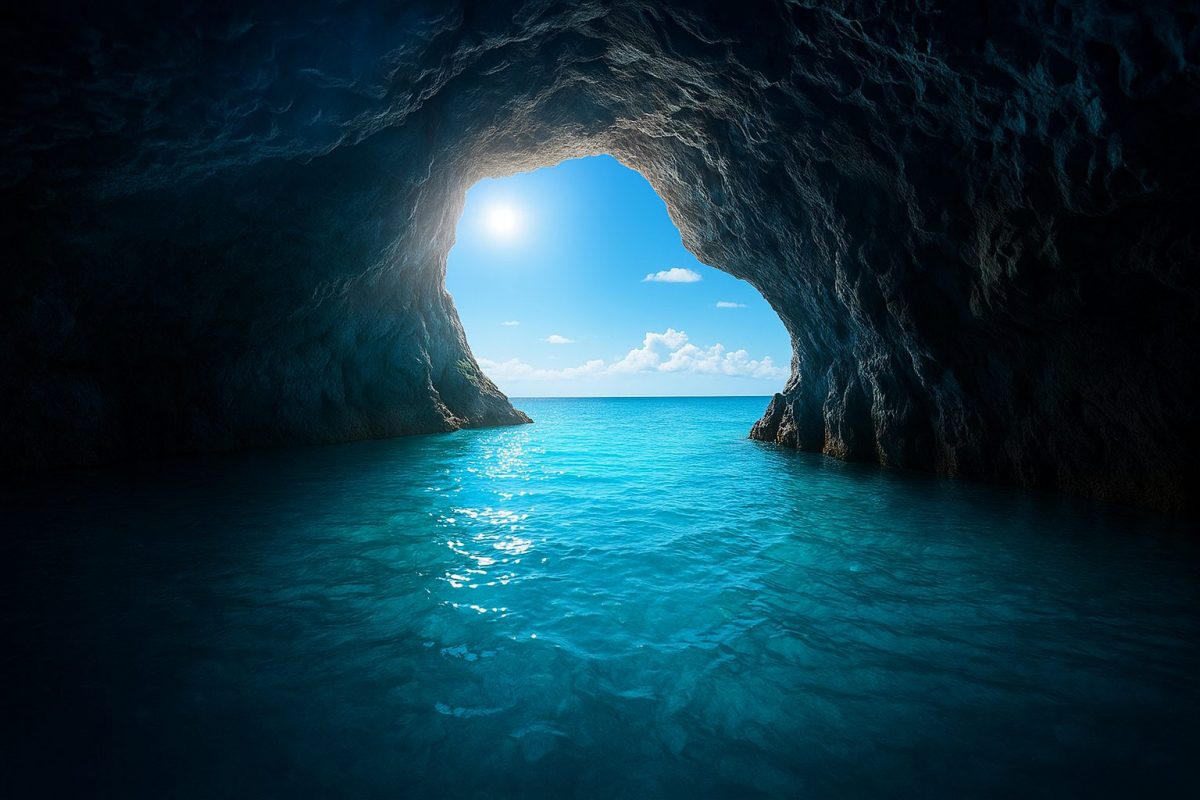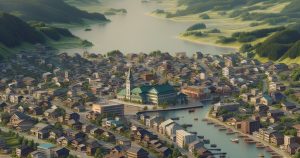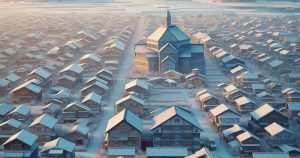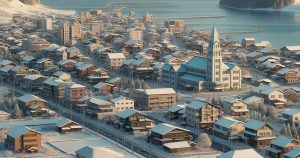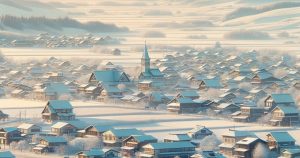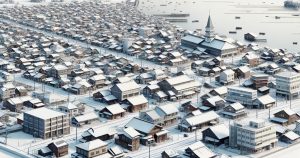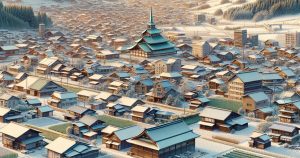| population | 3,315 peoples |
|---|---|
| area | 187.25 km² |
| population density | 17.7 peoples/km² |
Located in the southwestern part of the Oshima Peninsula, facing the Tsugaru Strait, Fukushima Town is a coastal community in Matsumae District, Hokkaido. Known as the northern entrance to the Seikan Tunnel, this town harmoniously blends the legacy of the Ainu culture with the pioneering spirit of Japan’s Meiji-era settlers. Fishing has long flourished here—particularly the production of dried squid (surume), for which Fukushima is one of Japan’s top producers. Agriculture and dairy farming also form key pillars of the local economy, sustained by the fertile land and abundant natural resources. Residents live in harmony with nature, celebrating the bounty of each season—from mountain herbs in spring to squid festivals in summer and harvest events in autumn.
Local speech and customs are deeply rooted in Hokkaido’s dialect and Ainu influences, shaping a unique cultural identity. Traditional performing arts such as the nationally designated Important Intangible Folk Cultural Property “Matsumae Kagura” are proudly preserved in the community. With its rich blend of nature, history, and tradition, Fukushima Town offers visitors a genuine glimpse into the timeless beauty of northern Japan, framed by the vast panorama of the Tsugaru Strait.
Culture and Traditions
Fukushima Town retains strong traces of Ainu culture alongside the historical legacy of the Matsumae Domain, which ruled this area during the Edo period. One of its best-known local traditions is the Shirafu Arouma Odori (Shirafu Wild Horse Dance), a ritual dance performed at the Shirafu Shinmeisha Shrine. This centuries-old ceremony, designated as a town-level intangible folk cultural property, prays for good harvests and safety at sea.
Another highlight is the Fukushima Daijingu Grand Festival, held every September at the Fukushima Daijingu Shrine. The festival features dynamic kagura performances and traditional parades through the streets, preserving rituals that date back to the 17th century. The Matsumae Kagura itself, recognized as an Important Intangible Folk Cultural Property of Japan, has been passed down through generations and remains an integral part of Fukushima’s spiritual life.
The residents’ daily lives are deeply tied to nature. The harsh winters give rise to snow festivals, while spring brings wild-plant foraging, summer offers vibrant fishing festivals, and autumn celebrates rich harvests. Visitors can also explore facilities that share the town’s pioneering history and the story of the Seikan Tunnel. Notably, Fukushima is the birthplace of two Yokozuna (Grand Champions of Sumo)—Chiyonoyama and Chiyonofuji—and the Chiyonoyama & Chiyonofuji Memorial Hall honors their remarkable careers and contributions to Japanese sports culture.
Local Specialties
- Dried Squid (Surume): Fukushima Town is one of Japan’s leading producers of dried squid. The cold waters of the Tsugaru Strait produce squid of exceptional quality, which are sun-dried in the sea breeze to achieve their distinctive flavor and texture.
- Flounder (Hirame): The fishing grounds off Fukushima, where cold and warm currents meet, yield thick, tender flounder with a delicate sweetness, highly prized for sashimi and fried dishes.
- Kombu (Kelp): The natural kelp harvested along the Tsugaru coast is rich in umami flavor and valued as a premium ingredient for dashi broth in Japanese cuisine.
- Potatoes and Soybeans: Fukushima’s cool climate enhances the sweetness of its crops. Locally grown potatoes and soybeans are used in various products such as buttered potatoes, miso, and soy milk.
- Wild Mountain Vegetables: In spring, the mountains yield edible plants like udo, tara-no-me, fuki, and Kita-ninjin (northern carrots). Locals enjoy harvesting them as part of the town’s seasonal lifestyle.
Annual Events
- Yarube Fukushima Squid Festival (August): The town’s signature summer event held along the Tsugaru Strait. Visitors can enjoy grilled squid, seafood stalls, fireworks, and live music. See details here.
- Fukushima Daijingu Grand Festival (September): Centered around Fukushima Daijingu Shrine, this historical festival features sacred kagura performances and colorful processions, reflecting the deep spiritual traditions of the region.
- Country Festival (October): A cheerful event celebrating the autumn harvest with local produce markets, stage performances, and community gatherings.
- Minami-Hokkaido Ekiden (November): A large-scale relay marathon that attracts athletes from around southern Hokkaido. Town residents line the streets to cheer on runners.
- Winter Snow Festival (February): Snow sculptures, ice slides, and local hot food booths create a warm and joyful atmosphere amid the cold northern winter.
Access
- By Air: The nearest airport is Hakodate Airport, about a two-hour drive (approximately 110 km) via National Route 228. Rental cars are the most convenient option for reaching the town.
- By Train: There is no railway station within the town. The nearest station is Kikonai Station on the Hokkaido Shinkansen line. From there, a Hakodate Bus route takes visitors to Fukushima in about an hour.
- By Bus: The Hakodate Bus “Matsumae Line” connects Kikonai, Fukushima, and Matsumae, serving as a vital transportation link for residents and tourists alike.
- By Car: From central Hakodate, drive south along National Route 228 for about two hours. The route passes through scenic coastal towns such as Shiriuchi and Matsumae.
- By Ferry: Although ferry service to Aomori Prefecture’s Sotogahama Town (formerly Mimmaya Port) was discontinued in 1998, visitors can still learn about this historical connection at the Seikan Tunnel Museum.
Tourist Attractions
- Seikan Tunnel Museum – A museum showcasing the engineering marvel of the world’s longest undersea tunnel. Visitors can explore exhibits about its construction and the challenges faced during the project.
- Chiyonoyama & Chiyonofuji Memorial Hall – Dedicated to two Yokozuna born in Fukushima. Displays include sumo memorabilia, videos, and their championship belts, offering a deep look into their legendary careers.
- Michi-no-Eki Yokozuna no Sato Fukushima – A roadside station featuring a rest area, local seafood dishes, and a shop selling regional specialties such as dried squid and kombu.
- Blue Cave (Aonodokutsu) – A mysterious marine cave in the Iwabe district accessible only by boat. The sunlight reflecting inside turns the sea into a deep, luminous blue, making it a hidden gem for photographers.
- Matsumae-Yagoshi Prefectural Natural Park – A scenic park encompassing coastal cliffs and mountain ranges. Visitors can hike, observe wildlife, and enjoy panoramic views of the Tsugaru Strait.
